Hiking the old German Industrial Heartland
Hiking in Germany
We continue our exploration of the Ruhrgebiet:
The Emscherweg
This walk is short, just right for the time of the year when there are so few hours between dawn and dusk. It features a park, a river promenade and a lake.
But beware: nothing is quite what it seems. The idyll is only skin deep: in “earth terms”, a few meters of top soil, to be precise and cracks appear here and there, allowing us to steal a glimpse into the dark heart of the Ruhr.
The walk begins in Dortmund, the Ruhrgebiet’s largest city. Step out of the central station, cross the main road and continue up the stairway into the city centre.
Turn left behind St Petri Church into Westenhellweg, the city’s main shopping street (it changes its name to Ostenhellweg after a while) until you reach the church of St Reinoldi, built in the 13th century and a reminder that many cities of the Ruhr existed long before the arrival of coal and steel.
Turn right here into Kleppingstraße, continuing past the Adler Tower on your left hand side, originally a part of the medieval town wall, and across the busy road until you reach the Stadthaus subway station at the next crossing.
Walk right through the station building, stepping, on the other side, into a scruffy little park.
After fifty metres or so, you can already see the tall tower of Westfalenpark in the distance – a good point of orientation because this is where we are heading. Continue down the street (called Hainallee) and use the pedestrian bridge to cross the busy highway before walking on the right hand side of the artificial lake straight to the park’s box office. (They charge a nominal entrance fee, € 1.50 per head at the time of our visit in December 2011).
The Westfalenpark – with a surface area of 70 hectares (roughly one fifth the size of New York’s Central Park) is one of the largest inner-city parks in Europe.
It was constructed in 1959 for the National Gardening Show (the German equivalent of the Chelsea Flower Show, but less posh and with a different host city every year).
An older park, overgrown allotments and a brownfield site (an old industrial landfill) were knocked together and regenerated. The 200 m high tower – equipped with a viewing platform on top (a lift will take you up for a small fee) – was, at the time, the tallest building in Germany.
Take some time to look around the park. When we were there, in late December, it was nearly abandoned, but even then it was easy to imagine how busy the place must be in the summer. (The tower was closed, too, so no pictures with panoramic views over the area. We have to leave those to your imagination.)
There are several cafés and restaurants, too, if you feel peckish. After you have explored all this, look for the Buschmühle exit on the far (southern) side of the park. You can’t miss it because everything around the park is, as you would expect in Germany, excellently marked.
Walk to the end of the parking area behind the exit and look for a bridge on your left hand side to cross the small river in front of you.
Turn left before the viaduct and walk between river and railway line (above you on your right) in the direction of Hörde.
The river, now on your left hand side, is the notorious Emscher, once rumoured to be the dirtiest in the world.
When the Ruhr area was heavily industrialized in the 19th century and the formerly rural and sparsely populated land around the Lower Rhine basin attracted millions of immigrants from all over Germany (and some of her neighbouring countries, too), the decision was made to use the river Ruhr as a source of drinking water and the Emscher as one large sewer for both human and industrial waste. This created serious problems as early as the late 19th century when many people who were living near the Emscher became ill, particularly during one of its many floods.
Consequently, the river was regulated, diverted and “channelized”. A large re-naturation project was started in the 1990s, but it will still take decades before the Emscher will be fully rehabilitated.
After a while, on the river promenade (called the Emscherweg – total length: 120 km from near-by Holzwickede to Duisburg where it flows into the Rhine), you will come across a roofed wooden bridge.
The river promenade continues on the other side, but it is well worth it to remain on this side for another 200 metres or so to explore the area behind the collapsed railway bridge that will shortly appear on your right.
The industrial ruin you see in the distance behind the bridge was the old Phoenix West facility, one of the Ruhrgebiet’s main factories for the production of crude iron.
This factory was operated until the early 1990s. Since then, the owners and various regional and municipal administrations have been engaged in discussions about its future. The idea is to convert the factory into a museum, a cultural centre or some such like, but no detailed plan has yetemerged.
All stakeholders, meanwhile, appear reluctant to tear it down. Understandably so: 19th and early 20th century industrial buildings have a power which is unmatched by almost anything else that was built during their era. Future generations will never forgive us if we raze them to the ground. That would be an act of vandalism, like the first Christians destroying the temples of antiquity.
Now retrace your way to the wooden bridge, cross it and turn right for another kilometer or so until you reach Hörde and Lake Phoenix.
Take a good look around you. Until recently, you would have stood at the very edge of one of the largest steel factories in Western Europe: here, at Phoenix East, they turned the crude iron that was manufactured at Phoenix West into steel.
When the factory was shut down in 2001, its facilities were dismantled (some were shipped to China where they are still in use), three metres of contaminated top soil were removed – and then, the entire area was flooded. This is how the 2 km long lake in front of you was created.
Under the water, nothing of the old plant remains – the only buildings left are the red brick warehouse in your back and Hörder Castle, the former admin office.
But it is great to imagine otherwise: that an all-consuming, biblical deluge has swallowed up the hellish furnaces of Phoenix East, cleansing the earth in preparation for its spiritual rebirth.
Such a “rebirth” – albeit on an altogether more modest scale – is indeed the objective of the regional government’s Lake Phoenix Regeneration Project. Offices, retail spaces and upmarket residential buildings will one day surround the lake – at least that is what the plan says.
In practice, meanwhile, it appears that the regeneration of the area still has a long way to go.
Walk past Hörder Castle on your right – along the channelized rivulet called the Hörderbach – before turning right into Hörder Bahnhofsstrasse.
After a couple of blocks, you will reach a subway station. Trains from here will take you back to central Dortmund.
Keep up to date with our articles about easy hiking trails in Germany. Follow us on Facebook or register to get our free updates direct into your email box.

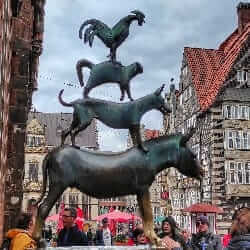
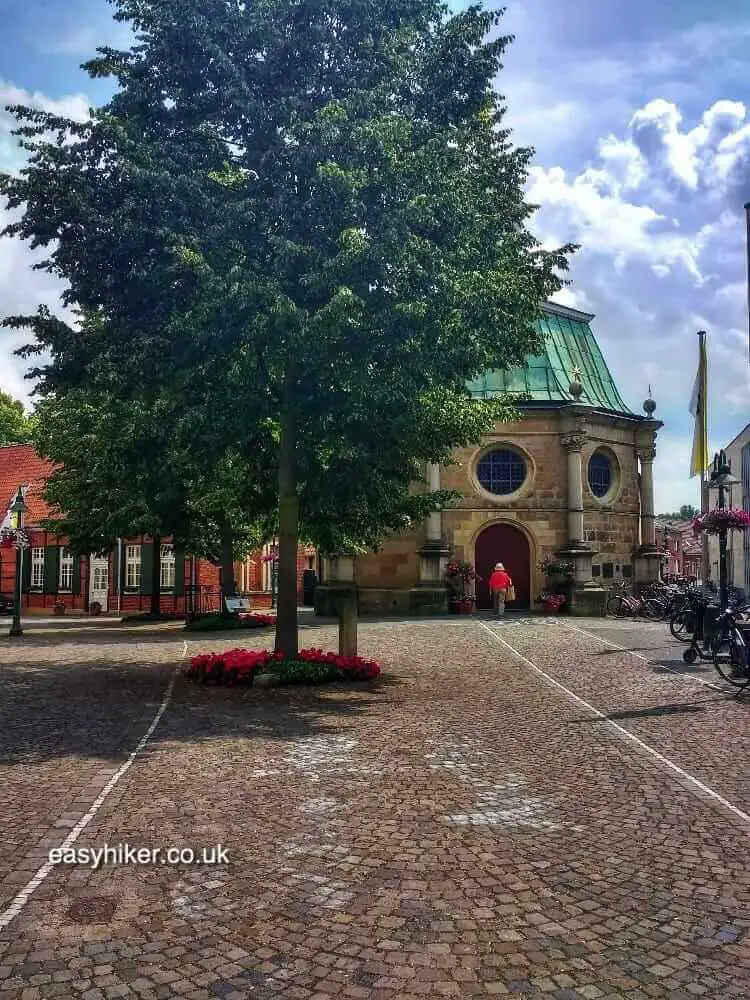
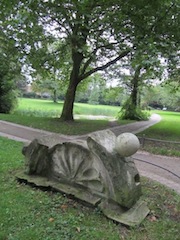
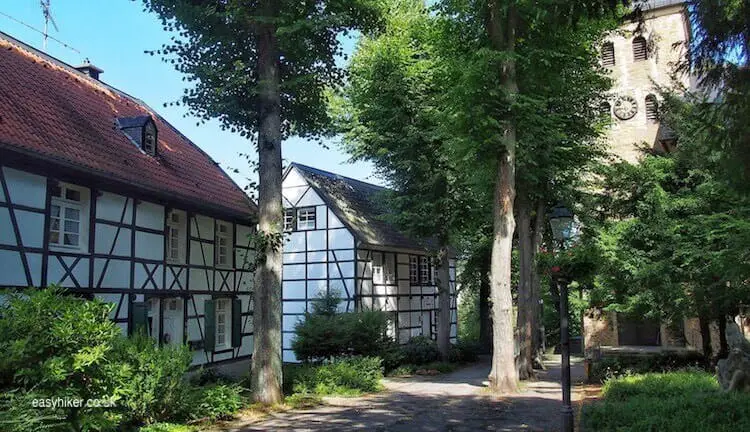
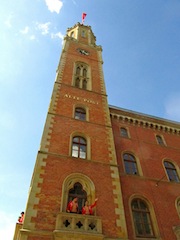
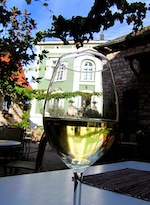
It’s worthy making hiking in such a virtual detour, in archeological sites like in old German post-industrial Ruhrgebiet. It is very inspiring. I hope in may country Morocco we will do the same rehabilitating works in our old mining sites, in Ketara -south of Marakkech or in other sites
Thank you
I agree. They are fascinating as modern ruins.
This looks great – I love photographing Industrial Grit, Old workings and the like, I would much rather shoot stuff like this than green landscapes.
great stuff
Tristan
Thanks for dropping by, Suzanne. When we were in Westfalenpark, it was between Christmas and New Year so it was really empty. But we could easily imagine how busy it could be in summer. Great for kids and adults alike.
Dortmund is actually a cool city with plenty of shopping and restaurants and friendly down-to-earth people. I’ve really enjoyed my visits there. Westfalenpark, one of the first stops on the hike, is a nice place to spend a few hours during a summer visit–Splashing in the fountains is totally acceptable!
As for the industrial nature of the hike, I think it’s important to acknowledge the role of this area in the development of modern Germany, and not pretend that the whole country is mountains and sunshine and beer steins and happy people everywhere. Appreciate the architecture and history and hard work of those before us, and maybe learn from some mistakes of the past.
I am looking forward to checking out this hike with my family and learning a bit more about the area.
I think I would do the same, John. Though not many people would find an old warehouse or a factory in an advanced state of decay alluring.
Fascinating! Industrial archaeology always gives me cause to make a detour when on my travels.
You’ll never know, Debbie. If you like shopping, you’ll love Dortmund. They have a lot of shops there. Unfortunately (or should I say fortunately?) Mrs Easy Hiker was too tired even to window shop.
I have never been to Dortmund but will probably visit at some point. Eons ago my relatives were from Dortmund! It might not become my favorite place but it will definitely be interesting.
I totally agree, Ted!
Even though it is not the idyllic scenery, it beats sitting at home watching TV.
This is a radical change from the views of rolling hills and valleys, it’s true. But a rather satisfyng change of vistas.
Not the prettiest of areas. Not sure an industrial area is a place I would consider hiking but it does have some surprisingly pleasant scenery.